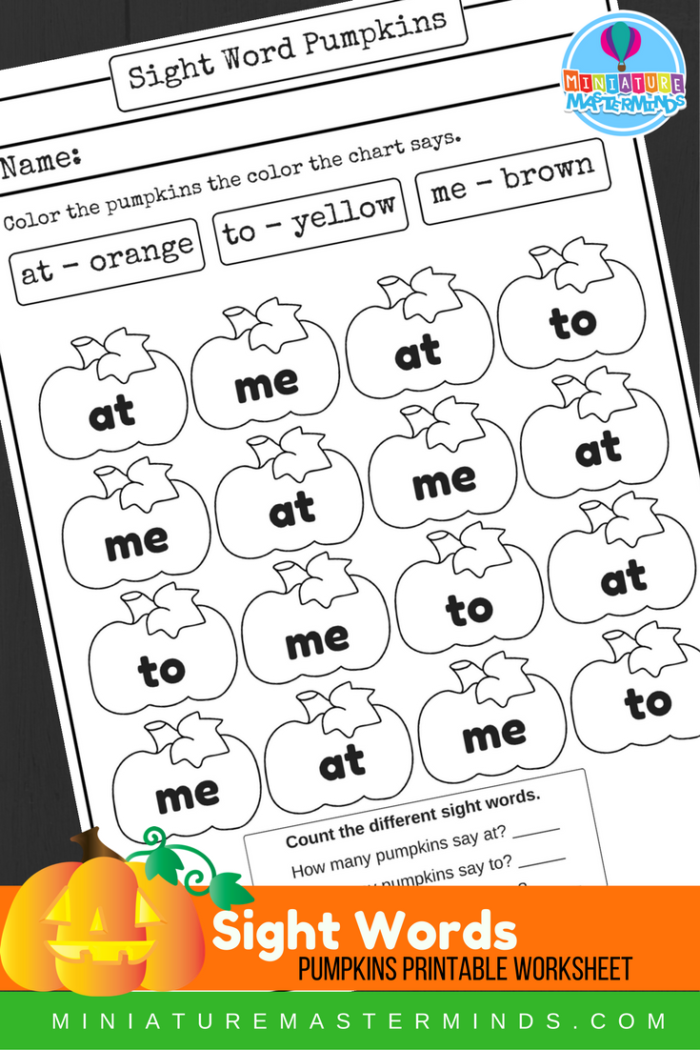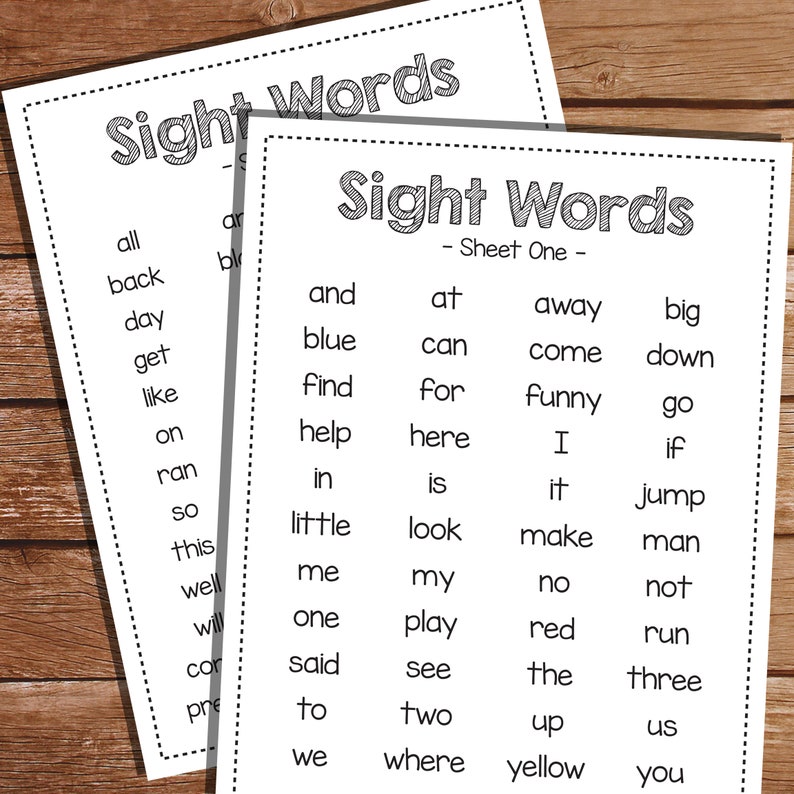

RELATED: Take a look at these Kindergarten activities! Remember that we read larger words over the years, and we want children to have a solid foundation to build upon as they continue to develop. That way, children can use those sounds to read and write. We want to help early learners understand that words are made up of individual sounds that the child has already learned. Why is decoding (sounding out) words important? RELATED: This is the collection of Kindergarten read alouds you need! We can do better than teaching our children to read and write based on memorizing the shape of words. Come and came is another example of two words that are easily misread based on their shape. The word pat may also be mistaken as put because it has a similar shape. Over time, children can quickly recall the word, but when they see the word put in all capital letters (such as PUT), they may not see it as the same word. When we show our children the word put on a notecard, they memorize the shape of the word. Memorizing a sight word is the same as remembering a shape. RELATED: Want some fun activities to help your Kindergartener with sight words? We have them! Let me say that again, memorizing sight words is not setting children up for success.
#AT SIGHT WORDS HOW TO#
With this, we make a quick attempt to help our children memorize how to spell their sight words – however, memorizing sight words is not setting children up for success.
#AT SIGHT WORDS FREE#
We are also trying to value free play at home and manage multiple aged children.

We have dinner to make and soccer practice to get to before sundown. This task can feel overwhelming for us as parents. If you have a school-aged child, they will likely have a few sight words to practice at home. RELATED: What is the Science of Reading? Read this article from Reading Rockets. The problem with spelling lists is that they traditionally rely heavily on memorizing words based on their shape and letter order. Sight words can be easily sounded out, but many of them tend to have one sound that can confuse our children.Īs a parent, you will likely see these words assigned on spelling lists. The goal is to help our children turn these high-frequency words into sight words. Sight words can be confusing because they’re also called high-frequency, lightning, snap, popcorn, and so on, but there is a difference.Ī sight word is a word that can be recognized automatically and effortlessly, whereas high-frequency words are words that occur most often in print (75% of printed words are high-frequency words). RELATED: WONDER: Playing to Learn is your online course to pave the path with helping children at home. This is why it is listed at the bottom of this post. PROMISE ME THAT YOU WATCH THE VIDEO AND READ THIS POST FULLY TO USE WITH THE DOWNLOAD. We even have a how-to decode sight words printable that will guide your conversations. This post, along with an IGTV video with my friend, Tavia from Young Learning, will set you up for success when helping you r child read and write sight words at home. The idea is to see which sounds our children can identify within the word, which helps move beyond memorization. The first step of d ecoding is stretching out the word to hear each sound within the word. We will help our child sound out their sight words so that those words eventually become automatic. Let’s break down how to decode (sound out) sight words with your Kindergartener, so it is doable.ĭecode means sounding out words. We love learning to spell our sight words with this fun CD collection.I know. Enter the words you want to practice, and print a set of free sight word dominoes! (Sight Words) Circle sight words with bottle cap stamps. Play a sight word game with a muffin tin. Get a free printable and play Roll a Sight Word. Write sight words on sticky notes and use small toys as learning props. Make a sight word parking lot! (Juggling with Kids)ĥ. Play “Where’s the Bear?” with Dixie cups. Here’s one of our favorites: write the sight words on sticky notes and slap them with a fly swatter. I love the variety in this post! (Finding the Teachable Moments)Ģ.

Get a free printable Tic Tac Toe board and learn sight words four different ways. These are all fun, creative ways to practice reading … with minimal set up. Is your child resisting those sight word flash cards? I’ve got good news.Īfter teaching your students their sight words in a meaningful way (my sight word lessons and decodable books are perfect for this), try one of these simple ways to practice sight words. Today I’m sharing a fun round up of sight word activities to try at home!


 0 kommentar(er)
0 kommentar(er)
